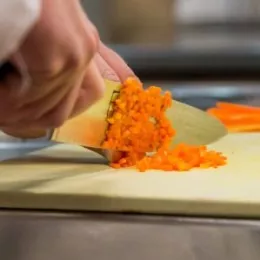 Friuli Venezia Giulia, the north-eastern most region in Italy—with coastal lands, mountains, and characteristic rocky soil—is perfect for wine-making. Though the fifth smallest region in Italy, it produced 18.2 million cases of wine in 2017 alone. Friuli Venezia Giulia is most well-known for their white wines, which happen to be some of the best that Italy produces. Amazingly, 77% of the 18.2 million cases were white wines in 2017.
Friuli Venezia Giulia, the north-eastern most region in Italy—with coastal lands, mountains, and characteristic rocky soil—is perfect for wine-making. Though the fifth smallest region in Italy, it produced 18.2 million cases of wine in 2017 alone. Friuli Venezia Giulia is most well-known for their white wines, which happen to be some of the best that Italy produces. Amazingly, 77% of the 18.2 million cases were white wines in 2017.
Friuli Venezia Giulia is also a highly complex region. For thousands of years many different empires battled to control the region, which has resulted in a diverse culture that contributes to the environment where the wine is grown. Between the Romans, Venetians, French, Austrians, Italians, and many more, each have left their mark and changed the development of wine produced in this region.
 Today, the wines continue to evolve and change throughout the region. Even though many consider it the best white wine region in Italy, there are many other characteristics that contribute to its great wine-making success. So, what makes this small region in Italy so unique? Read below to find out what Vias Imports taught us about the region.
Today, the wines continue to evolve and change throughout the region. Even though many consider it the best white wine region in Italy, there are many other characteristics that contribute to its great wine-making success. So, what makes this small region in Italy so unique? Read below to find out what Vias Imports taught us about the region.
SOIL
The soil of Friuli Venezia Giulia, particularly in the Collio region, is known as Ponca in the Friulano dialect, or Flysch in specific geological terms. This soil is found throughout the region and is comprised of marls (chalky clay) and sandstone, two substances which make soil very rocky. Rich in calcium carbonate and alkalinity, the soil helps to give the strong mineral notes and aromatic complexity in many of the wines from this region.
Even though Ponca contributes to the region’s most desired wines, it does have its downfalls. In rainier years it becomes prone to landslides and can destroy entire sections of vineyards in an instant.
Despite it’s notorious difficulty, winemakers have a particular fondness for it due to its ability to produce wines so unique to the region: rich in texture, high in acidity, but still balanced through the acidity.
CLIMATE
The region is characterized by a unique geographic location; on the edge of the Mediterranean climate, marked by the meeting of the Julian Alps mountains and the Adriatic sea. The climate can change in any area of the region at any moment, which can make for unique vintage’s and an ever-changing growing process.
Each of the growing areas in the region tend to have a wide variety of climates, which makes for varying wines. In the Collio DOC near the Slovenian border, the hilly land protects the vines from the cold winds and the close proximity to the Adriatic Sea helps to contribute to a mild and temperate climate. These temperature fluctuations heat and cool the soil which helps to ripen the vines to perfection, making for one of the most unique growing areas in Friuli Venezia Giulia.
NATIVE GRAPE VARIETIES
 Many of the growing areas have grapes that are native to the region. Although many wine growing regions also have native grape varieties, the history of Friuli Venezia Giulia is what makes the native grapes so interesting.
Many of the growing areas have grapes that are native to the region. Although many wine growing regions also have native grape varieties, the history of Friuli Venezia Giulia is what makes the native grapes so interesting.
Ribolla Gialla, a tart wine with a hint of salinity, is one of the ancient native varietals from the region, first mentioned in a medieval deed of sale dated to 1299. Long considered one of Italy’s greatest wines, it was appreciated by the nobility of Germany and Venice in the 13th century.
The most beloved wine of the Friulan people, aptly named Friulano or Tocai Friulano, has been a part of the wine-making tradition in this region for centuries. Evidence of this indigenous grape in Friuli dates back to the 12th century. Originally, many thought it was from Hungary, while others argue that it originated in Italy. Interestingly, experts recently found a wedding document that confirmed the grape came from Italy. In 1632, countess Aurora Formentini went to Hungary to marry Prince Adam Batthyany, and brought him “300 grapes of Tocai” as a wedding gift. The native Friulano grape has grassy aromas, similar to Sauvignon Blanc, although they are not related. It has fresh, ripe fruity flavors, that are balanced by herbaceous notes.
This blog post was originally published by the International Culinary Center (ICC), founded as The French Culinary Institute (FCI). In 2020, ICE and ICC came together on one strong and dynamic national platform at ICE's campuses in New York City and Los Angeles. Explore your wine education where the legacy lives on.



